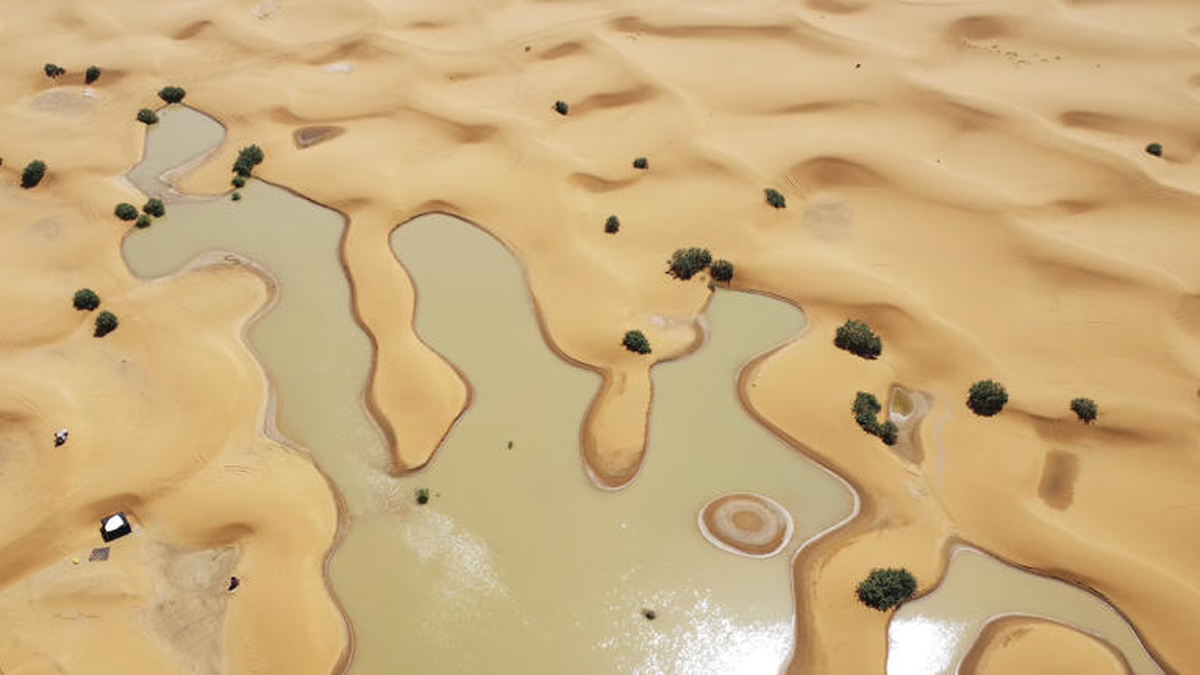
Storms left stunning images of water flowing through Saharan sands amid palaces and desert vegetation Photo Credit: Special Arrangements
A rare flood of rain has left blue lagoons of water among the palm trees and sand dunes of the Sahara Desert, bringing some of its driest areas to the lowest level in decades.
The desert of southeastern Morocco is one of the driest places in the world and it rarely rains until late summer.
The Moroccan government said two days of rainfall in September exceeded the annual average in many areas that receive less than 250 millimeters (10 in) of rain annually, including Tata, one of the worst-hit areas. . Tagounite, a village about 450 kilometers (280 mi) south of the capital Rabat, recorded more than 100 millimeters (3.9 in) of rain in a 24-hour period.
Read also, Which storm caused floods in Dubai? , Explained
The storms left amazing images of water flowing through the Saharan sands amid castles and desert vegetation. NASA satellites showed water rising rapidly to fill Lake Iriki, a famous lake between Zagora and Tata, which had been dry for 50 years.
In desert communities frequented by tourists, 4×4 vehicles drove through puddles as residents gazed at the scene in amazement.
Read also, Wind, solar farms could bring rain to Sahara desert
“It’s been 30 to 50 years since we’ve had so much rain in such a short period of time,” said Houssain Youabeb of Morocco’s Directorate General of Meteorology.
Such rains, which meteorologists are calling extratropical storms, could change the course of the region’s weather in the coming months and years as the air holds more moisture, leading to more evaporation and more storms, Uebbe said.
Six consecutive years of drought have created challenges for much of Morocco, forcing farmers to leave fields fallow and cutting off water supplies to cities and villages.
The abundance of rainfall will likely help replenish the large groundwater aquifers beneath the desert that desert communities rely on to supply water. The region’s dammed reservoirs reported refilling at record rates throughout September. However, it is unclear how much the September rains will help provide drought relief.
Sand and water flowing from oases killed more than 20 people in Morocco and Algeria and damaged farmers’ crops, forcing the government to allocate emergency relief funds, including to some affected by last year’s earthquake. Areas were also included.
published – October 12, 2024 10:46 am IST
